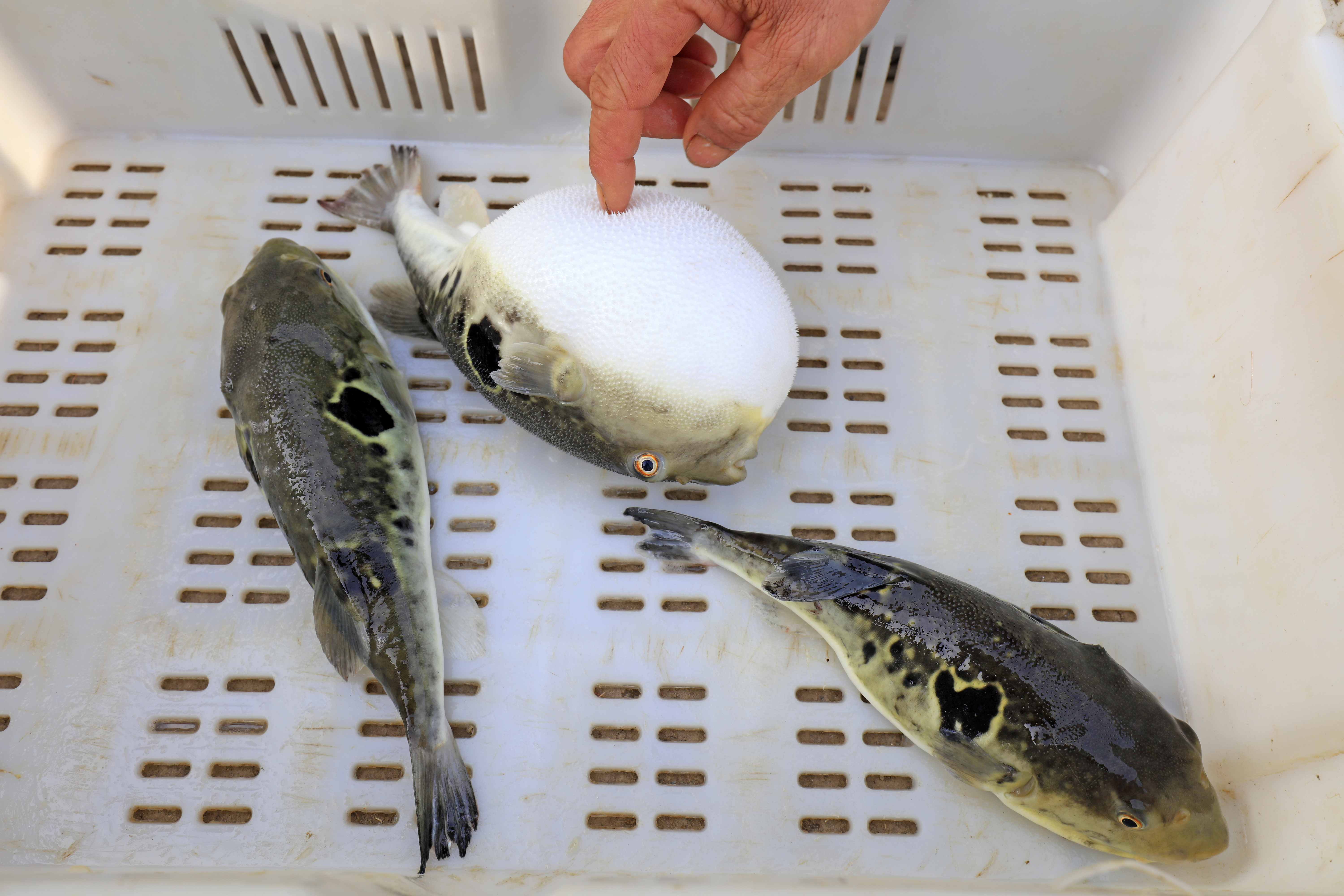Fugu is a Japanese delicacy made out of sliced pufferfish. As alluring as it be may for adventurous gastronauts, this dicey dish can prove deadly with just one wrong slip of the knife.
What is fugu?
Fugu is made of chopped pufferfish served in a sashimi style. Chefs will often arrange the thinly sliced flesh in the shape of an innocent-looking flower.
Different species of pufferfish can be used, but Takifugu rubripes, aka the Tiger puffer, is the most sought-after – and the most poisonous. The history of eating pufferfish in Japan goes back more than 4,000 years. Back then, however, fugu was most likely eaten out of necessity, rather than fancy dining trends.
While the flesh is perfectly edible and safe to eat, many parts of the pufferfish – such as the eyes, blood, liver, ovaries, and intestines – contain tetrodotoxin (TTX), said to be “one of the most potent neurotoxic poisons found in nature.”
TTX is estimated to be 1,200 times more toxic than cyanide and just 2 milligrams can be sufficient to kill a person. It attacks the body by interfering with the transmission of signals from nerves to muscles by blocking sodium channels, resulting in the paralysis of muscles.
To prepare the dish, chefs must be extremely careful not to accidentally slice any areas where TTX is present in high concentrations otherwise the meat can be contaminated with the neurotoxin – and become lethally poisonous.
Fugu poisoning
Fugu was blasted into the American consciousness by a beloved episode of The Simpsons in which Homer orders the dish at a sushi restaurant. It’s believed he consumed the fugu’s poison and he’s given 24 hours to live (well, 22 hours actually because the doctor left him waiting for so long).
As ever, the Simpsons wasn’t too far wrong, although 24 hours might be a fairly generous timespan for fugu poisoning – toxicity symptoms can emerge within 10 minutes to six hours after the ingestion.
People who consume ill-prepared fugu will first notice a tingling sensation and numbness of the tongue, lips, and face. As a result of muscle paralysis, they will go on to experience difficulty swallowing, walking, speaking, and breathing. Most mild cases resolve within 24 hours, but In severe instances, the person may present with respiratory depression, circulatory failure, and death.
Japan’s Health Ministry states that up to 50 people fall sick with pufferfish poisoning each year. While their statistics don’t specify the death rate, they say “a few” people die annually and note that fugu “accounts for the majority of food poisoning deaths in Japan”. In most of these cases, amateur cooks had attempted to prepare the fish themselves at home.
The Japanese health authority adds that there’s currently no effective treatment or antidote for puffer fish poisoning, so once the tell-tale symptoms occur, doomed diners must ride the storm and hope they didn’t guzzle down a lethal dose.

Feeling hungry? Three Takifugu pufferfish caught by fishermen.
Image credit: junrong/Shutterstock.com
What does fugu taste like?
Fugu is said to taste mild and fairly light. New York Magazine’s food critic Adam Platt describes the experience of eating fugu as a “letdown,” explaining that “it tastes flavorless and gummy, like a cross between… fluke and day-old squid.”
That said, he notes that the fish’s TTX neurotoxin adds a “pleasing numbing sensation when eaten in tiny amounts.”
How appetizing!
Is fugu legal?
Given its evident dangers, the consumption of fugu is tightly controlled and banned in many parts of the world. For instance, the sale of any Tetraodontidae pufferfish is totally banned in the European Union.
Fugu is available to eat at some prestige restaurants in the US, although the Food and Drug Administration does have some pretty tight regulations around its marketing and importation. As of 2007, the only acceptable source of imported puffer fish is from the New York-based food importer Wako International.
It is legal in Japan, although the law only allows highly trained chefs and licensed restaurants to serve the dish. It was outlawed in the country for several centuries between 1570 and 1870 due to the high number of deaths associated with the formidable fish.
How to become a fugu chef In Japan
Getting your hands on a fugu license in Japan requires intense dedication, skill, and knowledge.
As the New York Times explains, chefs must first receive two years of specialized training. Wannabe fugu masters must then pass a paper test in which they have to determine different species of pufferfish by sight and label the specific parts of the body that act as reservoirs of TTX.
Lastly, the chef must prepare fugu in front of a master. If a single drop of blood is shed, it’s an instant failure.
Source Link: Fugu: The Infamous Japanese Fish Dish That's Good Enough To Die For